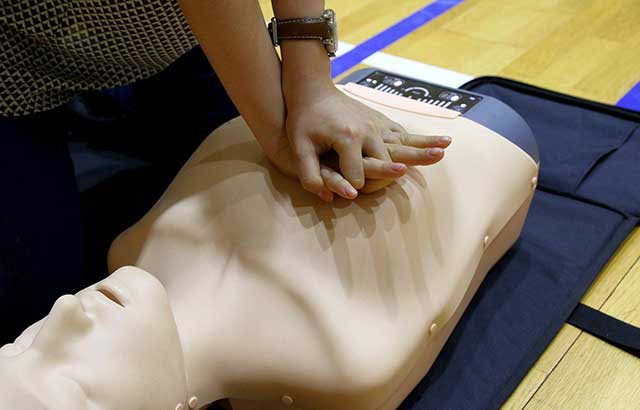Chronic Pelvic Pain
Chronic Pelvic Pain is pain that occurs below the belly button which has lasted longer than six months in duration, and is one of the most common medical problems affecting women. It is estimated that as many as one out of every five women age 18-50 has chronic pelvic pain that has lasted longer than a year. Additionally, one out of every ten visits to the gynecologist’s office is related to pelvic pain. Longstanding chronic pelvic pain can have a significant impact on the physical, emotional and social well-being of a woman. The process of evaluating, diagnosing and treating chronic pelvic pain requires patience, empathy and understanding from both the patient and the physician.
Causes of Chronic Pelvic Pain
The four most common causes of chronic pelvic pain are: endometriosis, irritable bowel syndrome, pelvic scarring/adhesions, and painful bladder syndrome (also known as interstitial cystitis).
Most people assume that pelvic pain only arises from the female reproductive organs (i.e. uterus, ovaries, fallopian tubes and vagina). However, organs from other body systems may also cause pain in the pelvic region. The bladder, colon, and the muscles of the pelvic floor or the front area of your abdomen can also cause chronic pelvic pain.
Additionally, chronic pelvic pain may arise from scar tissue (or adhesions) that arises after a person has had pelvic or abdominal surgery, or from damaged nerves in the pelvic area. In fact, up to 50% of women with chronic pelvic pain will have more than one source of the pain. Also, prolonged pain in one organ may cause pain in another organ system over time. The multi-system etiology of pelvic pain often makes the diagnosis and management challenging for both patient and physician.
Other Causes of Chronic Pelvic Pain by Organ System
- Gynecological System: Chronic pelvic and uterine infections, dilated and congested veins in the pelvic area, uterine fibroid
- GI System: Chronic constipation, Inflammatory Bowel Disease (Crohn’s Disease or Ulcerative Colitis)
- Urological System: Recurrent urinary tract infections, bladder injury
- Musculoskeletal System: Fibromyalgia, Pelvic Floor Myalgia, Poor Posture, Chronic Low Back Pain, Trigger Points
What are the Symptoms?
The symptoms of chronic pelvic pain vary widely among women. Some women may have a mild, dull constant ache in the pelvis. Others may experience sharp, intense pelvic pain that may greatly limit their normal activities. Other symptoms associated with chronic pelvic pain include pain with intercourse (dyspareunia), pain with urination and bowel movements, pain with menstrual cycles (dysmenorrhea), pain in the lower back that may radiate down the leg, and a feeling of constant heaviness in the pelvic area.
Additionally, dealing with long-standing chronic pelvic pain can affect the psychological well-being of a woman. As a result, symptoms of depression frequently are found in patients with chronic pelvic pain. In some patients, the pain leads to depression. However, in others both the depression and chronic pelvic pain may be the result of past life traumas. Studies have shown that up to 40-50% of women with chronic pelvic pain have a history of physical or sexual abuse. The symptoms of chronic pelvic pain can exhibit a strong “mind-body” connection. It is important to be very open with your physician and always expect confidentiality.
Diagnosis
The initial work-up may include a combination of the following: blood tests, urinalysis, screening for pelvic infections, pap smear, pelvic ultrasound, CT scan or MRI, laparoscopy of the pelvis and abdomen, and cystoscopy of the bladder. The choice and extent of diagnostic testing is guided by the findings during the history and physical exam. Diagnosing and treating chronic pelvic pain requires patience and open mindedness. In some patients the diagnosis may be clearly evident from a few diagnostic tests. In others, the diagnosis may require more extensive work, and is often a process of elimination involving the most likely causes of the pain. Obtaining a detailed history is key in the evaluation process. Therefore, it is important that patients prepare for their initial visit with a mental or written list of symptoms, medical and surgical history and any prior evaluations that have been performed to evaluate the pain. While the initial evaluation of chronic pelvic pain often begins with the gynecologist, some patients may require additional evaluation by other specialists including urologists, gastroenterologists, neurologists, pain specialists, physical therapists and psychologists.
Treatments
While the optimal goal of any treatment is to provide a cure, the reality is that in many cases long-standing chronic pelvic pain is not curable. Instead, the goal is to decrease the pain symptoms so that a woman may improve her quality of life and increase her functional activities. Straightforward cases of chronic pelvic pain can be treated with a single treatment plan. However, in most cases, the multi-organ system etiology of chronic pain requires a detailed approach to treatment. Depending on the cause of the pain, treatment may include a combination of medications, surgery, behavioral therapy and physical therapy. The results from treatment may not be instant, and in some cases may take up to several months to provide relief. The treatment process can be long and frustrating as several combinations of therapy may be necessary before finding the effective one. Remember the disease was “chronic” and pain relief is possible with time, patience and collaboration between the patient and physician.










